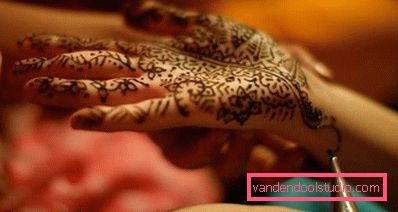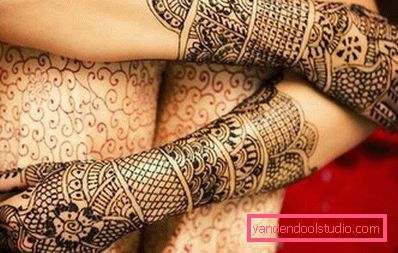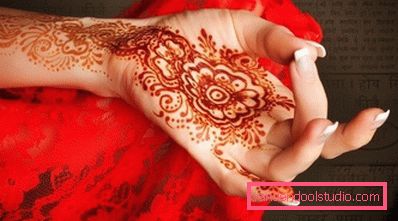Drawing on the body is the art of reincarnation

With the arrival of the summer season, when certain parts of the body are traditionally laid bare both in women and men, many people want to draw additional attention to their appearance with the help of a drawing. Mehendi - drawing on the body with the help of natural henna, has become one of the most popular and popular ways to decorate the human body.
A small historical excursion
It is believed that drawing with henna on the body was and is part of the religious culture of India. However, many historians insist on the version that this art was born in Egypt at the time of the pharaohs. In the study of mummies, it turned out that their eyelids were lined with henna in combination with other natural dyes. Anyway, drawing on the body has a long sacred history and is associated with the religions of the Middle East, India, Arab countries and Africa.
All of these cultures used natural henna as a dye, but the graphic image itself differed in content and symbolism. Each element of the image carried a protective function, in fact, it was a kind of amulet for its owner. Today in most countries, drawing with henna on the body is a tribute to fashion and the possibility of self-expression.

Drawing on the body with henna at home
Today, you can easily make yourself a pattern on the body with henna at home. This requires very little: henna, syringe or thin brush, vegetable oil. And also: a reserve of patience, good mood and artistic skills (if not, then you can always resort to a stencil). The basic drawing instructions are:
- Dissolve henna according to the instructions and let it brew for several hours.
- Wash the skin area under the mehendi pattern with eucalyptus oil.
- Overlay the skin with a stencil. If you want to make a pattern with your own hands, then the scheme previously applied to the body with a ballpoint pen will help.
- Using a brush or a syringe without a needle, apply the solution step by step onto the body according to the pattern created. Let the solution dry.
- Do not shake henna for several hours to obtain a stable result.
- After eight to ten hours, the excess paint must be carefully wiped off and smeared with a vegetable pattern with vegetable oil.

As you can see, there is nothing difficult in drawing mehendi at home, so it is quite possible to create an ornament on yourself by yourself. However, it is better to start from small areas, in a place convenient for drawing, for example, on a hand. So in stages you can master this original art.
Additional comments and recommendations
It is most convenient to carry out a similar procedure at bedtime. In this case, after the solution dries out, you need to fix the place of processing along with the stencil with a bandage so as not to accidentally erase the drawing.
On the first day after application, the image will appear very weakly. The saturation of the print will increase gradually over the next few days. Just like a tattoo lasts a couple of weeks, depending on the quality of henna and the duration of skin contact.

What additional rules to remember:
- wetting the treated area is possible only after a day;
- for fixing the result, it is required to wipe the skin daily with vegetable oil;
- if you want to modify the shade, you can add coffee or tea to the solution;
- If during the process of applying the pattern, the ink flows or the uneven line comes out, you can remove the image with a cotton swab dipped in vegetable oil (only immediately).
Type of art - drawing on the human body can now be mastered on yourself. Do not hesitate - this is a very exciting experience!